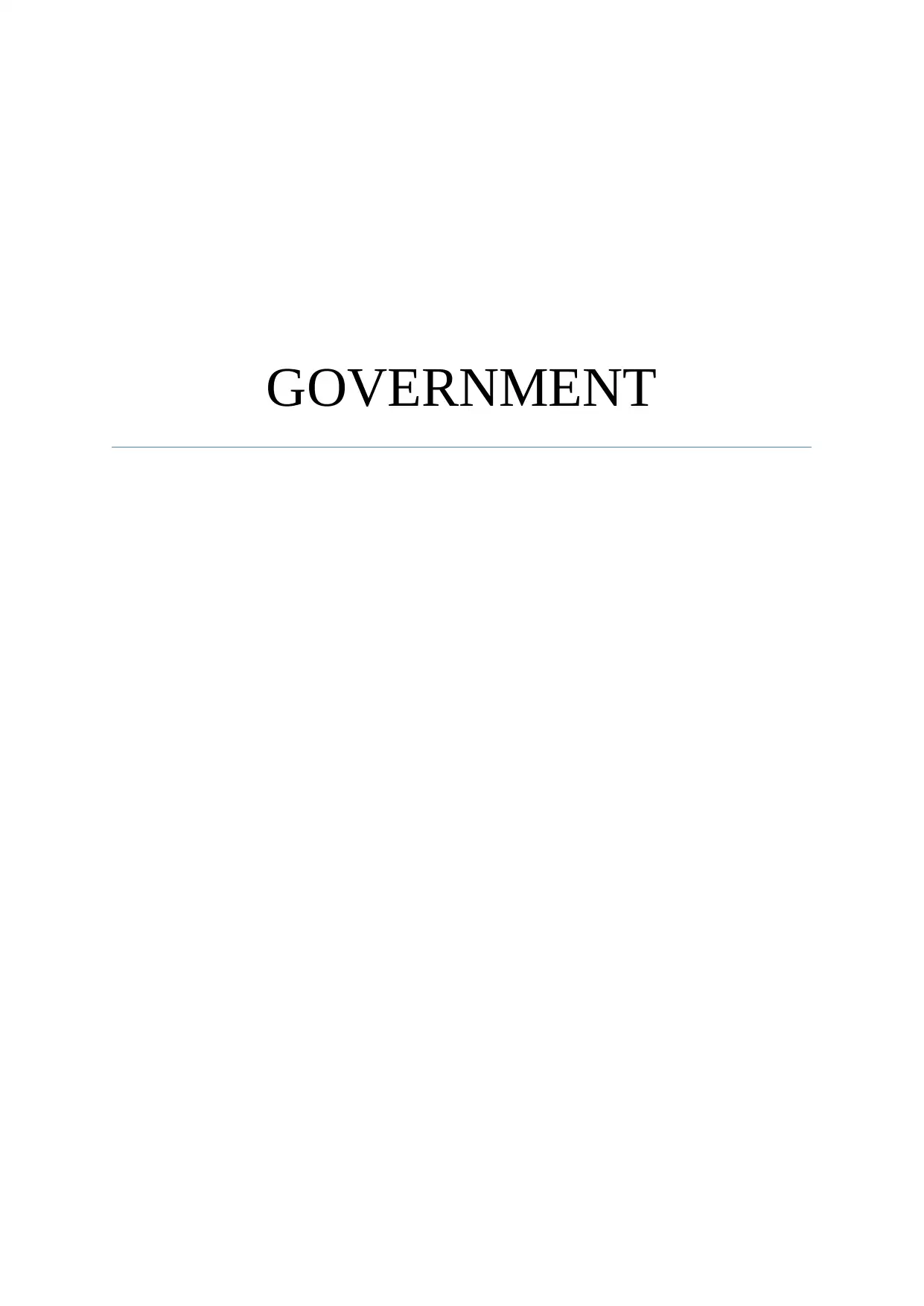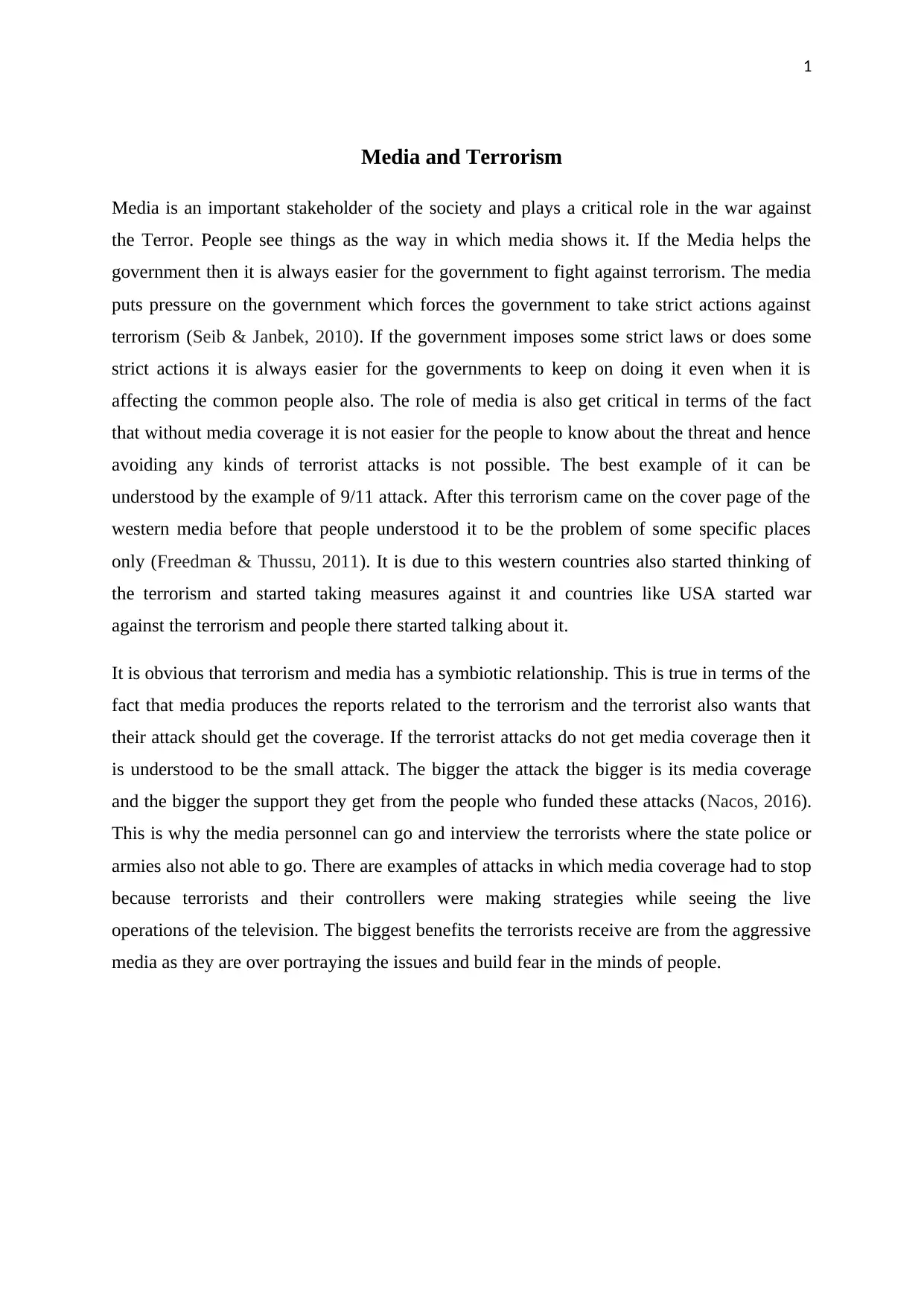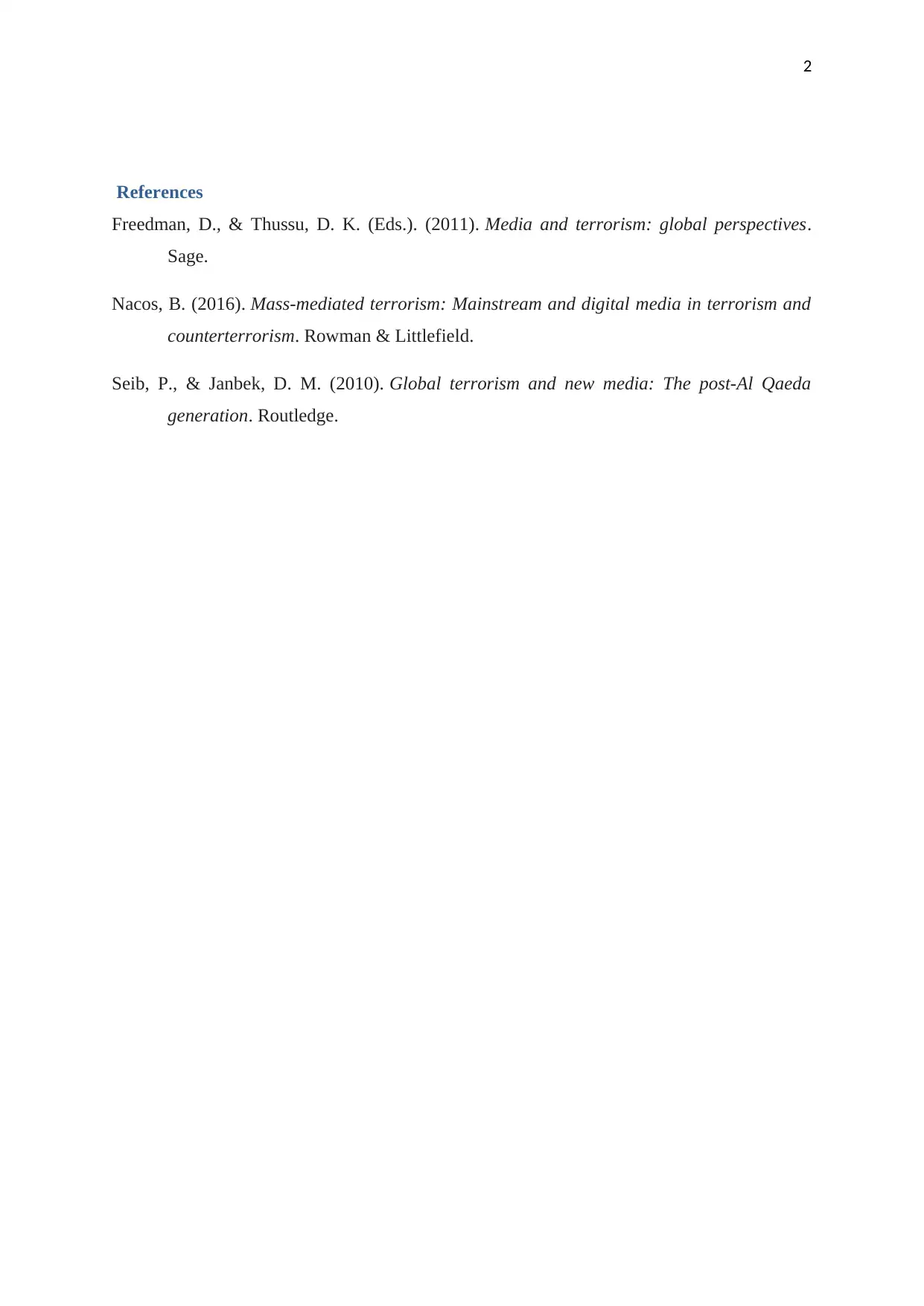Examining the Interplay of Media, Terrorism, and Government Policies
VerifiedAdded on 2022/08/28
|3
|490
|25
Report
AI Summary
This report examines the intricate relationship between media, terrorism, and government responses. It highlights the critical role media plays in shaping public perception, influencing government policies, and providing a platform for terrorist organizations. The report analyzes how media coverage, particularly of events like the 9/11 attacks, can amplify the impact of terrorism, leading to increased fear and potentially influencing the strategies employed by both terrorists and governments. It discusses the symbiotic relationship where terrorists seek media attention and governments struggle to control the narrative. The report also touches upon the challenges posed by media coverage during live operations and the ethical considerations involved in reporting on terrorism. The report utilizes references to support its arguments, offering a comprehensive analysis of the subject.
1 out of 3





![[object Object]](/_next/static/media/star-bottom.7253800d.svg)